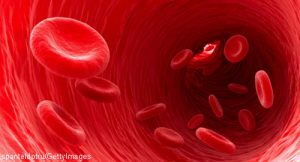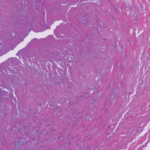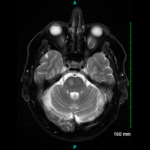 Over the past 10 years, researchers have uncovered significant evidence supporting the diagnosis and treatment of large vessel vasculitis. Now, rheumatologists can manage giant cell arteritis (GCA) cases with more standardized diagnostic imaging tools, newer therapies and optimized therapeutic and monitoring strategies. Imaging has also been increasingly recognized as important in GCA diagnosis, and tocilizumab was recently identified as a novel therapeutic option. This new information has been included in the latest update of the 2009 EULAR recommendations on the management of large vessel vasculitis.1
Over the past 10 years, researchers have uncovered significant evidence supporting the diagnosis and treatment of large vessel vasculitis. Now, rheumatologists can manage giant cell arteritis (GCA) cases with more standardized diagnostic imaging tools, newer therapies and optimized therapeutic and monitoring strategies. Imaging has also been increasingly recognized as important in GCA diagnosis, and tocilizumab was recently identified as a novel therapeutic option. This new information has been included in the latest update of the 2009 EULAR recommendations on the management of large vessel vasculitis.1
Sara Monti, MD, a rheumatologist at Fondazione IRCCS Policlinico San Matteo, Italy, and colleagues performed the literature reviews that support the 2018 update of the EULAR recommendations on the management of large vessel vasculitis.2 This thorough review of evidence published on the diagnosis, monitoring and treatment of GCA included studies published through December 2017. The systematic literature review was published in the September 2019 issue of RMD Open.3
The team identified 287 eligible articles on large vessel vasculitis, of which 138 studies focused on GCA. Most of the studies had low levels of evidence. In the review, researchers explained that one of their challenges was that rheumatologists lack standardized definitions for the different GCA disease patterns. This lack of standardization made it difficult to compare the studies. Despite this limitation, the investigators report the main disease patterns for GCA appear to be cranial and large vessel GCA.
The authors found two retrospective cohort studies that compared conventional clinical practices with a fast-track approach that integrates clinical evaluation with ultrasonographic assessment of the temporal and axillary arteries. The use of a fast-track approach to diagnose GCA significantly lowered the risk—relative to historical efforts—of ischemic complications, such as permanent loss of vision.
Researchers identified 13 retrospective, observational cohort papers of which only three prospective studies focused on the diagnostic role of temporal artery biopsy and on the associated clinical features. After reviewing these papers, they concluded that, although temporal artery biopsy is a highly specific test to confirm a GCA diagnosis, the data supporting a prognostic role for temporal artery biopsy on disease course outcome are inconsistent. The researchers also noted that there are still no reliable diagnostic or prognostic biomarkers for GCA.
Treatment
The systematic review confirms the need to initiate glucocorticoid therapy promptly after GCA is identified as a potential diagnosis. The researchers found no high-quality evidence on the most appropriate starting dose, route of administration, tapering and duration of glucocorticoids. However, because patients with GCA have an increased risk of dose-dependent, glucocorticoid-related adverse events, researchers suggested the addition of methotrexate or tocilizumab may be helpful in reducing relapse rates and decreasing the need for glucocorticoids.


